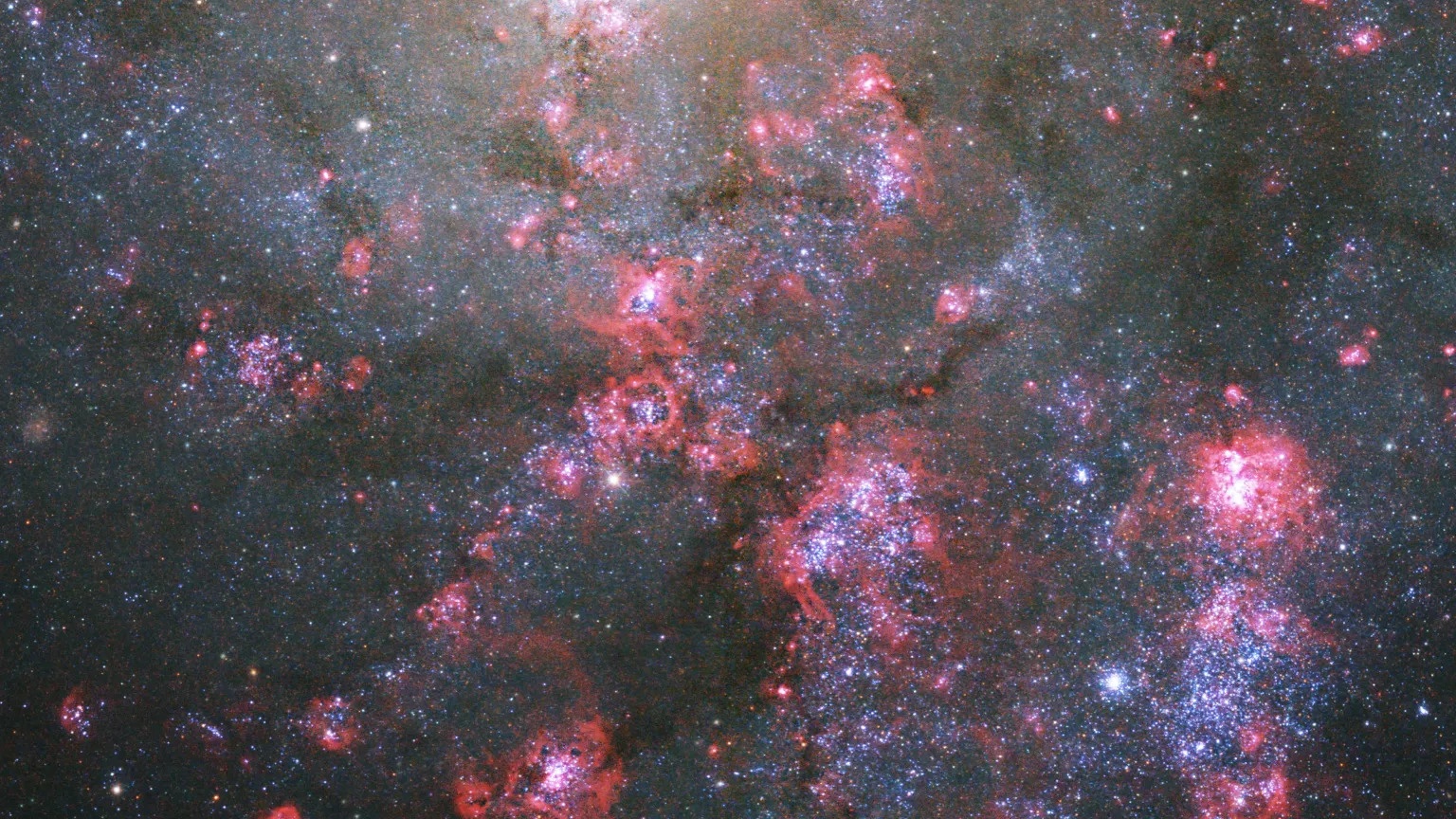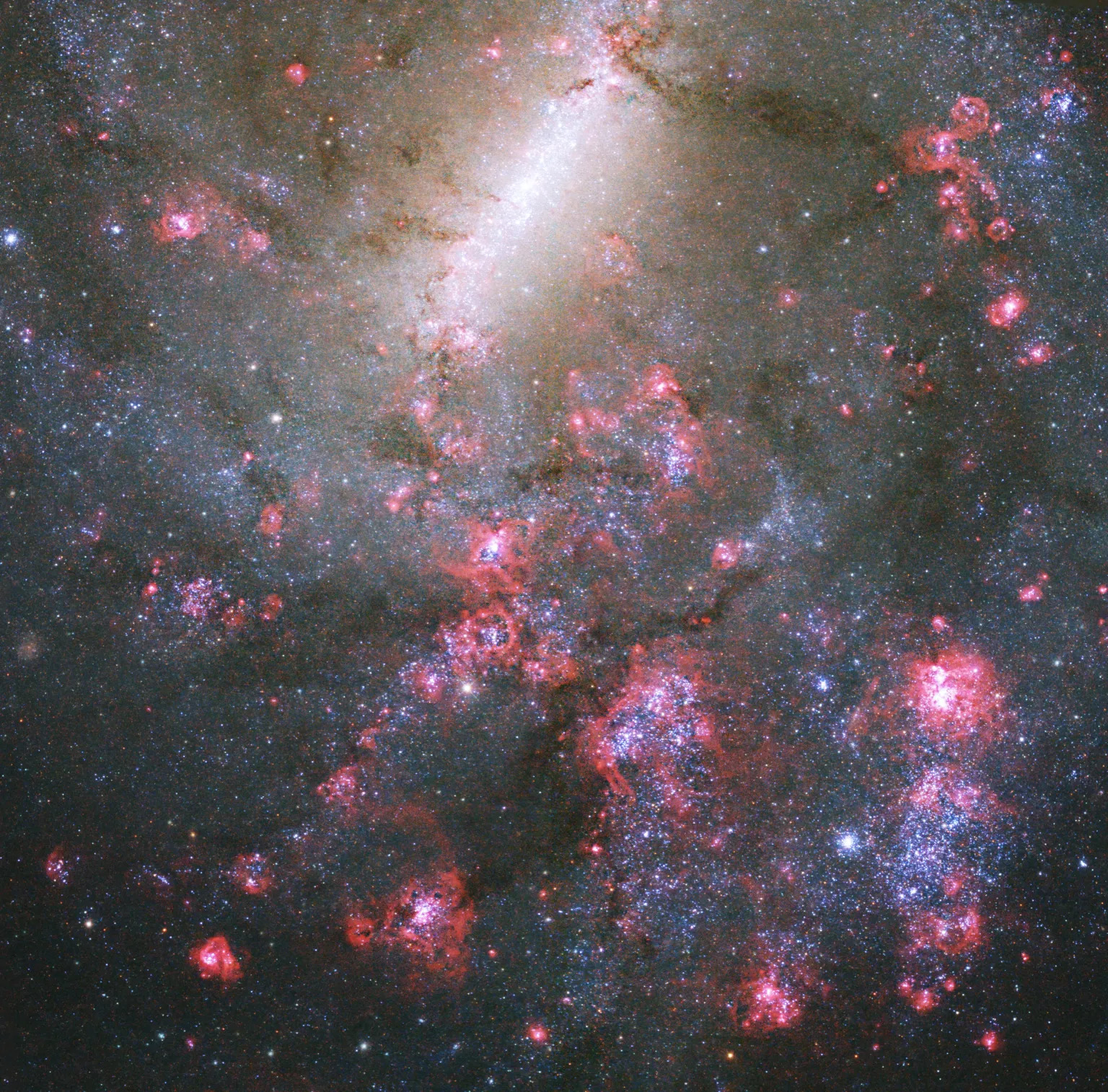Hubble Telescope discovers thousands of hot stars camouflaging a spiral galaxy (photo)
The galaxy NGC 5068 lies about 20 million light-years from us and is approximately 45,000 light-years in diameter.

Bright pink splotches of young star clusters camouflage a barred spiral galaxy in a new photo from the Hubble Space Telescope.
The galaxy, called NGC 5068, lies about 20 million light-years from Earth in the southern region of the constellation Virgo. NGC 5068 is believed to be approximately 45,000 light-years in diameter and have a prominent central structure shaped like a bar (captured in the top center of the new Hubble image) that is densely packed with mature stars, according to a statement from NASA.
Like most galaxies, NGC 5068 has a black hole lurking at its center, behind the central bar. This black hole draws the stars together with its intense gravitational pull. Bright pinkish-red patches spread across the foreground of the new image represent thousands of hot, young star clusters, which emit ultraviolet light. The process of star formation heats the surrounding interstellar material, creating these bright regions of ionized hydrogen gas.
Related: The best Hubble Space Telescope images of all time!
"Though not very clear from this angle, these splotches are along the galaxy’s spiral arms, where new stars typically form," NASA officials said in the statement.
You can vaguely make out the galaxy’s swirling spiral arms by tracing the pattern of the bright pinkish-red patches circling the central bar-shaped structure. This new Hubble image combines ultraviolet, visible and near-infrared data to capture all of the galaxy’s intricate features, which emit different wavelengths of light.

NGC 5068 is believed to house at least 110 Wolf-Rayet stars, which are old, massive stars that lose mass at a very high rate. This type of star is generally more than 25 times the mass of our sun and up to a million times more luminous. By comparison, our Milky Way galaxy has 220 Wolf-Rayet stars, according to the statement.
Get the Space.com Newsletter
Breaking space news, the latest updates on rocket launches, skywatching events and more!
NASA’s James Webb Space Telescope (JWST) also recently photographed NGC 5068. The JWST infrared image, released in June, was captured as part of a science campaign to study star formation in gaseous regions of nearby galaxies. Since Webb released its first images on July 12, 2022, it has continued to build on earlier Hubble observations of various cosmic objects, including a collection of 10,000 images of star clusters, NASA officials said in the statement.
Join our Space Forums to keep talking space on the latest missions, night sky and more! And if you have a news tip, correction or comment, let us know at: community@space.com.

Samantha Mathewson joined Space.com as an intern in the summer of 2016. She received a B.A. in Journalism and Environmental Science at the University of New Haven, in Connecticut. Previously, her work has been published in Nature World News. When not writing or reading about science, Samantha enjoys traveling to new places and taking photos! You can follow her on Twitter @Sam_Ashley13.









